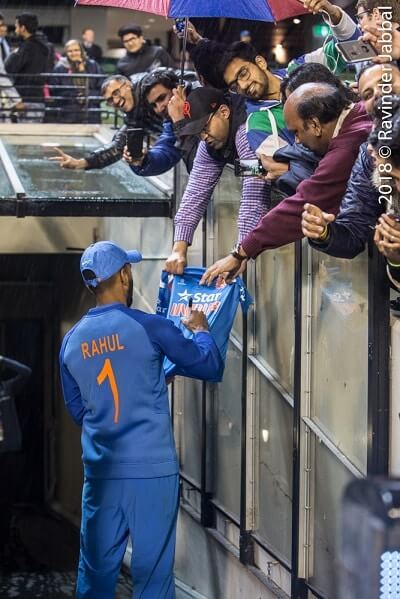As you read this piece, we are well into the T20 World Cup, the most glamorous of international cricket tournaments, being held in Australia for the first time. Record crowds have been flooding through the gates across the country, kicking off perhaps the most anticipated summer in Australian cricket history. For even though the explosive tournament seems like it was made for primetime television, it is merely a curtain raiser. Ahead lies Afghanistan’s first Test against Australia in Perth in late November, followed by the Border-Gavaskar Trophy, which will pit Kohli’s India against a resurgent Australian side enjoying the return of David Warner and Steve Smith, the duo who missed the previous edition during their ball-tampering suspensions.
Of course, that is the paragraph with which this piece would have begun had 2020 unfolded as expected.
As it stands though, COVID-19 has wreaked havoc on the Australian summer of cricket, the immediate consequences being that Australia will not host the T20 World Cup until 2022 and Afghanistan will no longer be touring Australia. All that remains is the jewel in the crown of Cricket Australia’s summer, by no coincidence the most valuable commodity in the game, a touring Indian team.
After several months of deliberation, navigating no shortage of logistical challenges, Cricket Australia recently announced that India would play three ODIs, three T20Is and the four-Test Border Gavaskar Trophy, in a tour reportedly worth some $300 million to Cricket Australia. Sydney will benefit most from the heavily re-jigged tour, with the ground slated to host two ODIs and two T20s as well as the traditional New Year’s Test match, which for once, is guaranteed to be a live rubber.
READ MORE: Broadcasting revenue keeps professional sport alive – just
For many reasons, this will be a tour like no other. There will be none of the usual fanfare that typically accompanies international cricketers. On match days, it’s unlikely that stadiums will operate at greater than 50 per cent capacity, a strange scenario for athletes used to limitless adulation. The Indian players in particular, long accustomed to the hordes of supporters who wait outside the team hotel, a veritable army of fans standing patiently by the training nets, and the throngs of supporters clamouring by the team bus, will be forced to find comfort in a silence that could be both welcome and unsettling. No selfies, no autographs, just cricket.
The critical question is what impact these seismic environmental shifts will have on the players and the quality of the cricket they are able to produce. In some ways, the COVID-19 restrictions are a blessing for the Indian team; while the limited fan interaction may reduce the pressure that no doubt seeps in from being constantly revered as pseudo-religious idols, half-capacity crowds and dholis at stadiums will still be around to get their adrenaline going when it is needed most.

Even beyond the new COVID-safe playing conditions, new experiences await the Indian contingent compared to its 2018/19 tour. The first Test, in Adelaide, will be a Day/Night Test – India’s first in Australia, and only its second overall (by contrast, Australia has played seven and remains undefeated in the format).
Meanwhile, the Gabba, traditionally the first Test of the Australian summer (even though it has been eschewed for Indian tours in years gone by), will now play host to the last Test, after quarantine issues in Queensland forced the visitors south of the border.
READ MORE: ICC gambles T20 World Cup on BCCI’s word
Then there is the weight of heightened expectation for the visitors. For the first time ever, India will tour Australia absent the wounds of defeat, with Kohli’s charges having won the 2018-19 edition 2-1, a scoreline that flattered the home side and handed India its first ever Test series win on Australian soil. In fact, India have won three of their previous four Test series against Australia, a staggering record. But if there is anything more dangerous than an Australian team at home, it is an Australian side that is not only atop the ICC Test rankings, but hell-bent on revenge (though the players refuse to use the word).
And lastly, perhaps the greatest challenge of all. By the time the first ball is bowled in Adelaide on 17 December, neither India nor Australia will have played a Test match in the preceding 10 months. Many players will have played only T20 cricket in that time, though the Australians enjoy the advantage here, with the Sheffield Shield first-class competition currently proceeding in full swing.
Kohli and Co will arrive on Australian soil armed with a blueprint for success; but if 2020 has proved anything, it is that even the best laid plans often go awry.
ODIs
1st ODI: 27 November, SCG
2nd ODI: 29 November, SCG
3rd ODI: 2 December, Manuka Oval
T20Is
1st T20I: 4 December, Manuka Oval
2nd T20I: 6 December, SCG
3rd T20I: 8 December, SCG
Tests
1st Test: 17-21 December, Adelaide Oval (Day/Night)
2nd Test: 26-30 December, MCG
3rd Test: 7-11 January, SCG
4th Test: 15-19 January, Gabba





